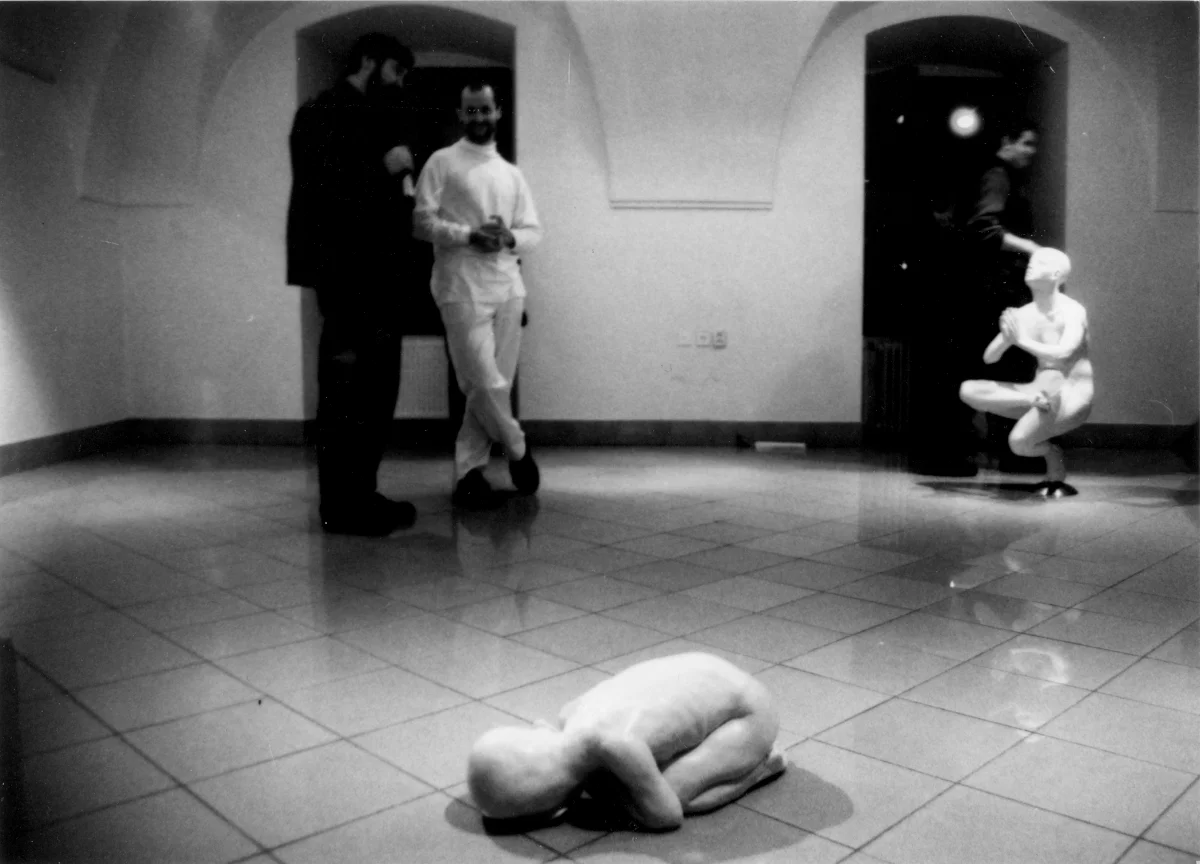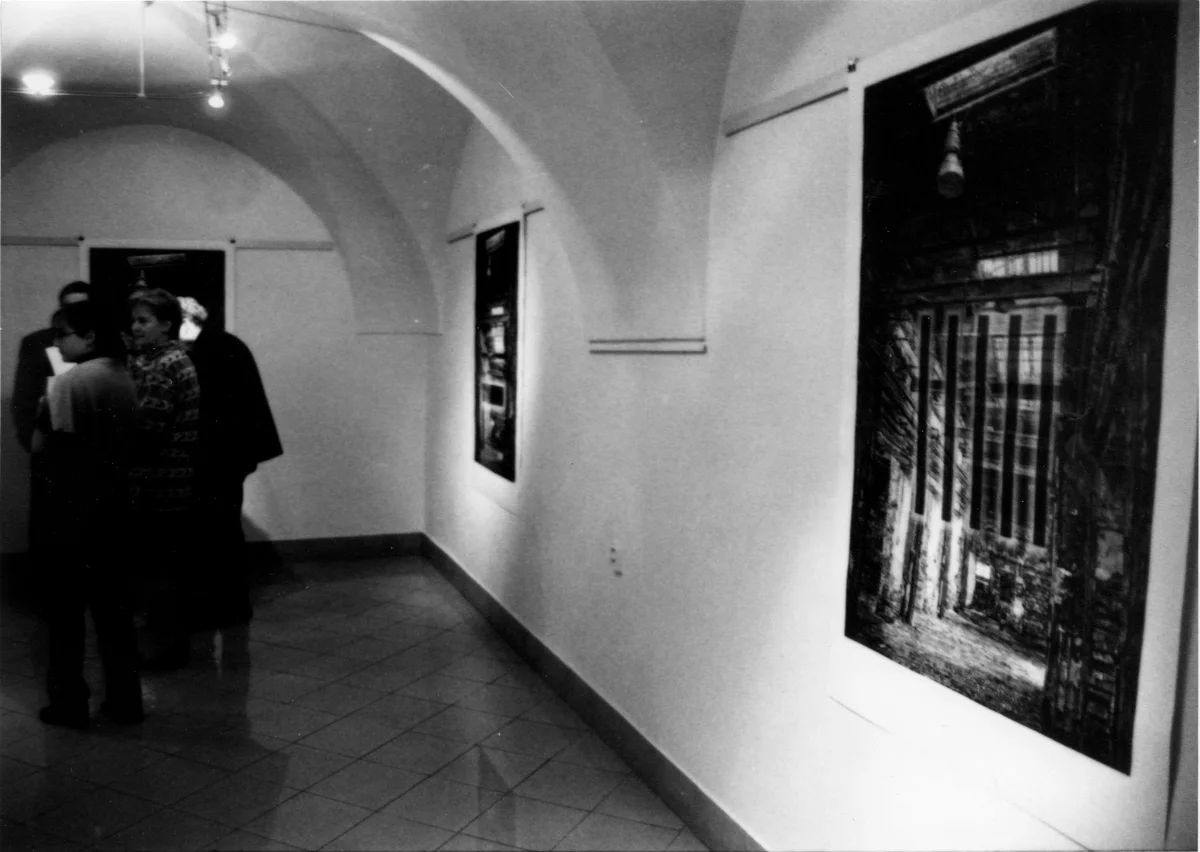
Lang’s House Gallery in Frýdek-Místek,
(with Ján Lastomírský)
10-11/2001
Curator: Pavel Netopil
Photos: Kristýna Štuková
“If two don’t do the same, they can be the same”
… said two young authors – a native Czech-Slovakian graphic artist Ján Lastomírsky (1972, Hlinsko in Bohemia) and sculptor David Moješčík (1974, Frýdek-Místek). However, almost immediately the question comes to mind, what is “the same” and “the same”? Even without the connotations of the North Moravian and East Slovak dialects, I have to state that the answer will not be easy without a brief description of what both authors deal with. Of course, there are connections between the realistic way of expression of Ján Lastomírsky and David Moješčík, which connect the two artists more, but nothing can be quite certain…
Let’s consider Lastomírské’s graphic sheet as a medium. Characteristically, it is based on an approach that is presented to us as the only true one with the illusion of construction of a single-focal space vision, in a perspective repeated by painting since the Renaissance – later also by photography, film and partly by television. The linocut matrix impression provides the “matrix” again before being reprocessed with screen printing. Working with matrix 2 not only provides Lastomírski with space to apply distinctive projections of geometrical definitions of shape and connection, but also enables a way not to dissect its aura. Reproduction technologies, as described by Walter Benjamin, weaken the character of the work of art through repeated reproduction.
Lastomírske’s graphics will surprise us with their complexity, size and hard work. They are usually processed in series, and their content and layout of light fields could be compared to variants of Piranesi’s cycle (Prison). Lastomírsky often develops his series from a single template, from the empty interior of an industrial hall (Brno’s Vaňkovka). Originally, he also drew his interventions into multiplied photocopies. At present, he applies the supplemented xeroscopes separately – or! also as a proposal for possible spatial installations (e.g. Light carpet, 9/10/2000, former monastery church of St. Wenceslas in Opava).
Although it might seem that David Moješčík’s sculptures of mostly female or girlish models basically express the same realistic model, I must state that the author approaches the manipulation of what is seen differently. It also focuses on the sophistication in capturing the form of the act and the functions of the human body as consistently as possible. Like the ancient Andalusian and Castilian sculptors of the beginning of the modern age, he does not forget the colored surface of the sculptures, expressively contributing to the urgency and the overall lively realistic effect, which he often multiplies to create the perfect illusion by wearing a hair wig. However, Moješčík’s sculptures are not only veristic, mere imitation does not constitute the substance of the work’s communicative structure. This is more seriality – in particulars adding up to a single and unrepeatable type, by creating which the author strives to achieve his own vision of the perfection of ideally true paths. I would say that in addition to the otherness of the media, such as sculpture and graphics are also indisputable in their reproducibility, the polarity of the approaches of David Moješčík and Ján Lastomírsky is comparable to the difference between the whole of particulars and the particularity of wholes. Really: “if two don’t do the same thing, it can be the same thing!”
Pavel Netopil

